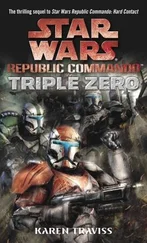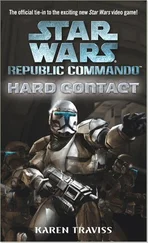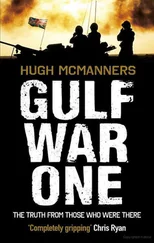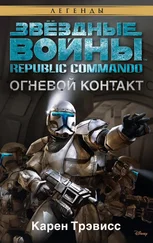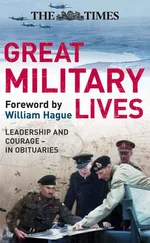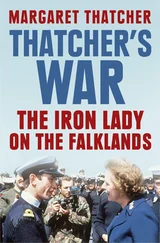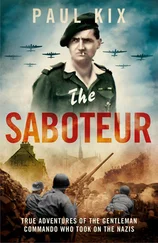Hugh McManners - Falklands Commando
Здесь есть возможность читать онлайн «Hugh McManners - Falklands Commando» весь текст электронной книги совершенно бесплатно (целиком полную версию без сокращений). В некоторых случаях можно слушать аудио, скачать через торрент в формате fb2 и присутствует краткое содержание. Город: London, Год выпуска: 2014, ISBN: 2014, Издательство: Nightstrike Publishing, Жанр: nonf_military, Биографии и Мемуары, на английском языке. Описание произведения, (предисловие) а так же отзывы посетителей доступны на портале библиотеки ЛибКат.
- Название:Falklands Commando
- Автор:
- Издательство:Nightstrike Publishing
- Жанр:
- Год:2014
- Город:London
- ISBN:978-0-992-81540-0
- Рейтинг книги:4 / 5. Голосов: 1
-
Избранное:Добавить в избранное
- Отзывы:
-
Ваша оценка:
- 80
- 1
- 2
- 3
- 4
- 5
Falklands Commando: краткое содержание, описание и аннотация
Предлагаем к чтению аннотацию, описание, краткое содержание или предисловие (зависит от того, что написал сам автор книги «Falklands Commando»). Если вы не нашли необходимую информацию о книге — напишите в комментариях, мы постараемся отыскать её.
Falklands Commando — читать онлайн бесплатно полную книгу (весь текст) целиком
Ниже представлен текст книги, разбитый по страницам. Система сохранения места последней прочитанной страницы, позволяет с удобством читать онлайн бесплатно книгу «Falklands Commando», без необходимости каждый раз заново искать на чём Вы остановились. Поставьте закладку, и сможете в любой момент перейти на страницу, на которой закончили чтение.
Интервал:
Закладка:
Had a letter from my friend Alice in New York. Some of her friends are Argentinian and are embarrassed by all this, blaming Galtieri.
We received, by signal, orders to join 45 Commando for the landing.
Saturday, 15 May: I’ve got to go across to RFA Stromness (the ship carrying the bulk of 45 Commando) for orders with CO 45 Commando. There has also been a problem with the wrong secret codes being issued, so I’ve got to sort that out.
We completed a course of medical refresher training and were issued with the morphine – two ampoules of Omnopon each, packed in urine sample tubes to prevent them getting damaged. We also finished making up a comprehensive medical pack for the patrol to carry in addition to our normal individual first-aid kits. These were complemented with as many vacuum-packed field dressings as we could fit into our fighting order and pockets.
The morphine and our compasses, the two most important bits of kit we had, went round our necks. The rest of our kit was carried in the following way. Personal weapons were always in our hands, fully loaded. In our pockets we carried 24-hours worth of food (mainly chocolate and biscuits), several more loaded magazines and first-aid gear, penknife, water purifying tablets and a set of maps – all completely unmarked, the positions having been memorised. Our fighting order – pouches suspended on a belt with shoulder straps, contained more loaded magazines, food, medical gear, a small cooker, chopping knife, emergency flares, a radio beacon, at least two quart water bottles, a tin mug for cooking, and grenades. The Bergen rucksack contained a resupply of food, ammunition, a camouflage net with waterproof poncho shelter, a radio, spare batteries and a hand generator, quilted ‘Chairman Mao’ suit, spare socks, foot powder, a telescope, binoculars, a night vision device, a camera with spare film, and other items I’ve now forgotten about. We always used to take tins of curry powder on exercise to brighten up the compo rations, but now no-one seemed to bother with this small extra weight, preferring to carry more ammunition.
This list is by no means exhaustive but it does give some idea of how our bergens and fighting order came to weigh an average of 120 pounds and often much more. The clothes we wore, with the pockets filled with food, ammunition and medical kit, weighed about 20 or 30 pounds, plus the pistol on a belt around the waist or in an inner pocket, and binoculars tucked down the front of the windproof smock. Naturally, as you ate the food, the load became lighter, and it was very noticeable that for the same sort of reason, mortar teams were always very keen to start firing off their very heavy rounds.
Because of the weight, you could only really carry ten days supply of very meagre rations with you. This would mean one tin and a couple of packets of biscuits a day, and a lot of very sweet ‘wets’ of tea and coffee. I’d taken up smoking small cigars, which were lighter than food and good at staving off the hunger. It meant that towards the end of longer operations, even with extra rations brought in and buried in caches, we’d end up stripping out our bergens, pockets and fighting order, to find that last bit of chocolate or packet of squashed, frozen then melted Rolo chocolate toffees.
Our physical training on the way down had continued relentlessly despite the changes of ship and the conflicting demands on space. Running round a small flight-deck on one of the RFAs during heavy weather was quite exciting, the secret being to time your run so that as you got near the side, the ship was on an up-roll and the first half of your run back was downhill, changing into uphill as you reached the rail again. If you got this wrong you could easily end up in the sea.
I made much use of my skipping-rope becoming adept at crossovers and double-jumps. FO1’s daily regime was a warm-up in the morning, wearing boots to keep our feet from going soft, and then a hard session in the late afternoon light, wearing trainers. This consisted of a series of warm-up exercises followed by a complete sequence of strength and mobility exercises to cover every muscle group, especially our backs which were going to have to carry the heavy loads. These were accompanied by and followed by cardio exercises.
After these exertions we’d go down to the vending machine flat and have a cup of tea, or, if the ship’s ice-cream machine was working, a cornet from the kiosk. I’d then go to the wardroom for tea and stickies as adjunct to dinner in the Wardroom, two hours later than in the main galley.
Events seemed to speed up as we prepared for the landing at San Carlos Water. D-Day was firmly established as 21 May, which became an open secret throughout the ship. I began to spend much of my time in the Amphibious Operations Room reading the bulging signal logs to make sense of the various agencies that were sending me conflicting orders. Everyone was going flat out on their little section of the jigsaw puzzle, and you had to work everything out for yourself.
A multitude of last-minute preparations kept us busy. We totally stripped down our rifles and pistols, checked and oiled the working parts, dismantling the magazines to ensure that they were completely free of dirt and that the springs which pushed the rounds up to the chambers were not weakened. Our maps were glued together and cut so they could be folded into a trouser pocket, applying waterproof plastic film to the surface to seal out water.
In the quiet of the ship’s chapel, the only space not already used by others, I went carefully through the various Geneva Conventions and Rules of War with FO1. It sounds strange to have ‘rules of war’ – indeed almost a contradiction of terms. War is a terrible thing, but without the moral constraint of the Geneva Conventions it could very easily become much worse. I was particularly concerned with the rights of prisoners of war. It is essential, if captured, to know exactly your rights within the Geneva Conventions if only to identify whether or not your captors are playing by those rules.
You are only obliged to give name, rank, number and date of birth – referred to as the ‘Big Four’. It was also important to be quite sure of the rules that determine who on the battlefield is a combatant, and to whom the status of prisoner of war is given under the Conventions. Anyone who openly carries arms, regardless of whether uniform is worn, is legally a combatant and therefore may not be shot as a spy. The threat of summary execution would make it very hard to resist interrogation if you were not absolutely sure of the law – a small comfort under the circumstances, but preferable to ignorance. This clause was particularly important to Special Forces people, as we wore what suited us best, rather than what was officially provided.
My nightly study of the thick, classified signals log started to pay off. Knowing the background to the decisions that were being made, when eventually a series of signals came in giving me my instructions, I knew more or less what was going on. Our orders to go ashore with 45 Commando had been a red herring – as I’d suspected. We were now told that FO1 was to work exclusively with the Special Boat Squadron, in keeping with all the training that Nick Allin and I had been doing with them for the previous four years, running the Battery’s two amphibious operations teams. Des Nixon, Steve Hoyland and Tim Bedford, our new boys, did not know the SBS, and were understandably uncertain whether this good or not. Nick and I had no such reservations, and were delighted to be working with our friends again.
The Special Boat Squadron has been described as the Royal Marine equivalent of the SAS. This is an unfair (although understandable) comparison, because the two organisations are very different. Members of the SAS are recruited from the Army and its structure is based upon an infantry regiment plus their own signals squadron, training wings with others (like a helicopter flight) tacked on. They have the whole British Army from which to select the people they want. As Army units are very different (what do the Ghurkhas, Grenadier Guards and Royal Engineers have in common – for example) the SAS have a very wide range of experience, background and type of person from which to draw. Conversely, the SBS recruit only from the Royal Marines, a much smaller number from which to select, but all from the same, already highly-trained background. This is hardly a disadvantage – indeed it is one of the strengths of the SBS that they are all Royal Marines who’ve survived an extremely taxing period of further selection and training.
Читать дальшеИнтервал:
Закладка:
Похожие книги на «Falklands Commando»
Представляем Вашему вниманию похожие книги на «Falklands Commando» списком для выбора. Мы отобрали схожую по названию и смыслу литературу в надежде предоставить читателям больше вариантов отыскать новые, интересные, ещё непрочитанные произведения.
Обсуждение, отзывы о книге «Falklands Commando» и просто собственные мнения читателей. Оставьте ваши комментарии, напишите, что Вы думаете о произведении, его смысле или главных героях. Укажите что конкретно понравилось, а что нет, и почему Вы так считаете.

